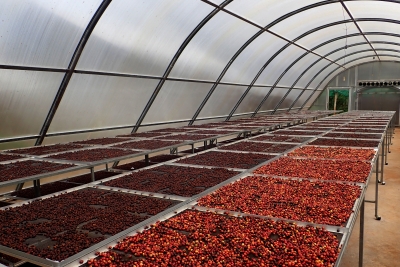Opportunities for the uptake of renewable energy technologies

For many developing countries, limited access to energy can hinder the development of modern agro-processing industries, prevent farmers from producing higher value products and be a major cause of food losses. Countries, like Rwanda, seeking to meet their growing food and energy needs while also shrinking their carbon footprints are increasingly looking to renewables like solar, wind, biomass and hydropower. FAO’s report Renewable energy for agri-food chains: investing in solar energy in Rwanda, published under K4I, looks at opportunities for the uptake of solar energy technologies in Rwanda’s agrifood sector.
The assessment breaks down the country’s agrifood chains into their main production and processing blocks. It then assesses the energy requirements at each stage of the chain, showing the potential market size and areas with the most promise. Investing in renewable energy technologies can help minimize emissions along agrifood chains, improve productivity and competitiveness and make better use of the earth’s natural resources. They can also help countries meet their international development commitments, including under the Nationally Determined Contributions and the 2030 Agenda.
The study classified solar energy interventions as either Type 1, including decentralized solar equipment catering to a specific stage of the value chain, or Type 2, in which electricity demand could be substituted by solar-based PV systems. Identifying the market potential of a certain technology is a good way to get the private sector and government to focus on scaling up those technologies. The assessment found that the potential market size for specific solar technologies in the horticulture chain, for example, could reach around USD 470 million, while the market size for small-scale milk chillers in Rwanda could reach USD 25 million.
Should these solar technologies be deployed, they could solve some of the structural constraints preventing the country’s agribusiness sector from modernizing while also creating jobs, especially for women and young people. The methodology can be applied to the broad range of renewable energy technologies available and to all agrifood chains. Solar energy technologies should be screened against other renewable energy alternatives to find the most sustainable and cost-effective solutions for the agrifood chain in question, based on the context and needs of the country.
